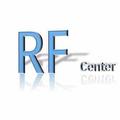安捷伦频谱分析仪基础

内容简介:
What is a spectrum?
So what is a spectrum in the context of this discussion? A spectrum is a collection of sine waves that, when combined properly, produce the time-domain signal under examination. Figure 1-1 shows the waveform of acomplex signal. Suppose that we were hoping to see a sine wave. Although the waveform certainly shows us that the signal is not a pure sinusoid, it does not give us a definitive indication of the reason why. Figure 1-2 shows our complex signal in both the time and frequency domains. The frequency-domain display plots the amplitude versus the frequency of each sine wave in the spectrum. As shown, the spectrum in this case comprises just two sinewaves. We now know why our original waveform was not a pure sine wave. It contained a second sine wave, the second harmonic in this case. Does thismean we have no need to perform time-domain measurements? Not at all. The time domain is better for many measurements, and some can be made only in the time domain. For example, pure time-domain measurementsinclude pulse rise and fall times, overshoot, and ringing.
有道翻译:那么在这个讨论的背景下,光谱是什么呢?频谱是正弦波的集 合,当这些正弦波组合得当时,就会产生被检测的时域信号。图1-1显示了复用信号的波形。假设我们希望看到正弦波。虽然波形清楚地告诉我们,这个信号不是一个纯正弦信号,但它并没有给我们一个明确的说明原因。图1-2显示了时域和频域的复信号。频域显示器绘制振幅与频谱中每个正弦波的频率。如图所示,频谱在这种情况下只包含两个筋波。现在我们知道为什么原始波形不是一个纯正弦波了。它包含了第二个正弦波,这里是二次谐波。这是否意味着我们不需要进行时域测量?时域更适合许多测量,有些测量只能在时域进行。
例如,纯时域测量包括脉冲上升和下降时间、超调和振铃。

The frequency domain also has its measurement strengths. We have already seen in Figures 1-1 and 1-2 that the frequency domain is better for determining the harmonic content of a signal. People involved in wirelesscommunications are extremely interested in out-of-band and spurious emissions. For example, cellular radio systems must be checked for harmonicsof the carrier signal that might interfere with other systems operating at thesame frequencies as the harmonics. Engineers and technicians are also veryconcerned about distortion of the message modulated onto a carrier. Third-order intermodulation (two tones of a complex signal modulating eachother) can be particularly troublesome because the distortion components can fall within the band of interest and so will not be filtered away. Spectrum monitoring is another important frequency-domain measurementactivity. Government regulatory agencies allocate different frequencies for various radio services, such as broadcast television and radio, mobile phone systems, police and emergency communications, and a host of otherapplications. It is critical that each of these services operates at the assignedfrequency and stays within the allocated channel bandwidth. Transmitters and other intentional radiators can often be required to operate at closelyspaced adjacent frequencies. A key performance measure for the power amplifiers and other components used in these systems is the amount of signal energy that spills over into adjacent channels and causes interference.Electromagnetic interference (EMI) is a term applied to unwanted emissionsfrom both intentional and unintentional radiators. Here, the concern is thatthese unwanted emissions, either radiated or conducted (through the powerlines or other interconnecting wires), might impair the operation of other systems. Almost anyone designing or manufacturing electrical or electronicproducts must test for emission levels versus frequency according to regulations set by various government agencies or industry-standard bodies.Figures 1-3 through 1-6 illustrate some of these measurements.
有道翻译:频域也有它的测量优点。在图1-1和图1-2中,我们已经看到频域更适合于确定信号的谐波含量。从事无线通信的人们对带外和虚假辐射非常感兴趣。例如,蜂窝无线电系统必须检查谐波载波信号可能干扰其他系统在同一频率运行的谐波。工程师和技术人员也非常关心调制到载波上的信息的失真。三阶互调(一个复杂信号的两个音调相互调制)可能特别麻烦,因为失真成分可能落在感兴趣的波段内,因此不会被滤掉。频谱监测是另一个重要的频域测量活动。政府管理机构为各种无线电服务分配不同的频率,例如广播电视和无线电、移动电话系统、警察和紧急通讯,以及许多其他应用。关键是这些服务中的每一个都在指定的频率上运行,并且保持在分配的信道带宽内。发射机和其他有意设置的辐射器常常需要在相邻频率间隔很近的情况下工作。在这些系统中使用的功率放大器和其他组件的一个关键性能指标是溢出到相邻通道并造成干扰的信号能量的数量。电磁干扰(EMI)是一个术语,适用于来自有意和无意的散热器的不想要的排放。
在这里,令人担忧的是,这些有害的排放,无论是辐射的还是传导的(通过电力线或其他互连线),都可能损害其他系统的运行。几乎所有设计或制造电子产品的人都必须根据政府机构或行业标准机构制定的规定,对排放水平和频率进行测试。
图1-3到1-6演示了其中一些度量。






